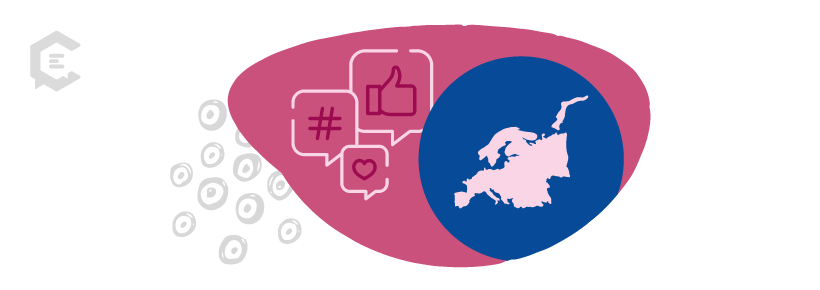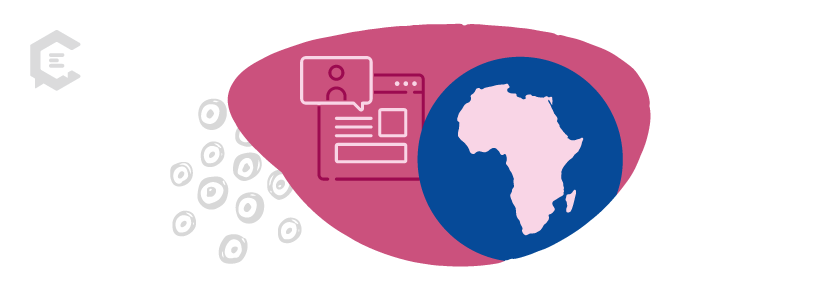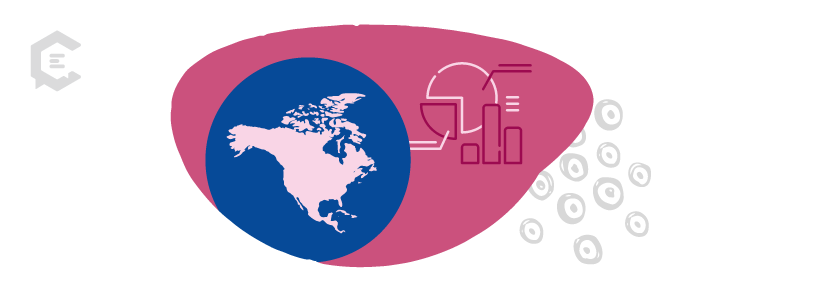Today, we are living on a truly global planet. If you live in the U.S., you may view your world as the epicenter of content marketing. But storytelling and digital media are ubiquitous. The content you produce may travel around the world… literally.
Digital media enables us to talk, see, and learn from others around the globe. And great content knows no geographic borders. In fact, consuming content from another perspective can help educate, inspire, or sell just as well as content that’s created in your own backyard (metaphorically).
Many companies today are location agnostic. As a result of the pandemic, people work remotely and you may not even know where the words you read or pictures and videos you see are coming from. These basic principles, based on a global study, summarize the trends that content marketers worldwide have observed. “Humanized content” is No. 1. In other words, develop content that resonates with your audience.

A look at content marketing around the world
That said, different parts of the world have different ways of communicating. We may all know, for example, that “s” takes the place of “z” in writing from the U.K., but cultural differences, privacy laws, and societal norms may all have an impact on the content you publish and consume.
Other continents and countries may be experimenting with creative approaches that you can apply to your own programs.
So, let’s take a trip around the world and give you a new perspective on global content.

Asia
Marketers in this continent spend roughly a quarter of their budgets on content marketing. Like many regions, Asia has its own content marketing association, a non-profit that provides education, awards, and community.
Some of the key trends around content in Asia include:
- The proliferation of apps
- An uptick in video usage, which seems to be true worldwide
- Time spent on mobile devices is on the rise. As in many markets, online shopping is driving growth.
Asia is a huge continent, comprised of many different countries with their own regulations. So, if you plan to create content specifically for the Asian market, know the rules.
For example, in China, you can’t use certain popular words in your copy: “national/state level,” “top class,” and “best” are all prohibited. India has specific laws related to influencer marketing and even dictates hashtags that advertisers must use, including #Ad, #Sponsored, #FreeGift, #Employee #Partnership, and others.
Although this report is a few years old, it is one of the most comprehensive guides to content marketing in Asia, and the trends it contains may be useful if you’re expanding into this market.

Europe
Like Asia, this continent is comprised of many different markets and languages. In addition, studies show that social media is consumed differently in the countries within Europe. For example, social media use in Malta among businesses is at the 80 percent level, whereas France is only 60 percent.
European lawmakers have long been concerned with privacy and transparency in content marketing and new legislation may have an impact on what marketers can say and who they can say it to.

South America
Latin America represents roughly 10 percent of the world’s population. Its rate of social media adoption exceeds that of the United States, according to this report from the Harvard Business Review. The report also points out that although marketing technology (martech) does not yet have the same rate of adoption as it does in other markets, inbound marketing that is driven by content is a cornerstone in this region.
Video content is on the rise in this region, as in many other markets around the globe. A whopping 88 percent of people in the region consume streaming video content, making it a great place for marketers to reach their targets.

Africa
Storytelling has long played a role in African culture and history. So, content marketing is a natural extension of that.
Digital penetration in Africa has lagged behind other parts of the world, but it has begun to catch up. Areas like Nigeria, Kenya, and South Africa are very sophisticated in terms of internet penetration and online marketing, so one strategy does not always fit all when you’re marketing in Africa. Look at where each region is in its social media evolution and customer needs.
As in other regions, marketers need to be familiar with the laws governing digital marketing. For example, three different forms of legislation govern web-based marketing in South Africa.

Australia
This continent seems to be one of the content capitals of the globe, with 96 percent of marketers using some form of content marketing in their strategy.
As in much of the world, video is extremely popular. A comprehensive special report from We Are Social breaks down how and where our friends “down under” are spending their time online, which is helpful in crafting your content strategy in that market. Close to 90 percent of social media users watch online videos and 64 percent stream music. When looking to reach your target market in Australia, pay close attention to the most popular platforms.
Last year, new legislation in Australia tightened policies around digital marketing, especially as they relate to payments for content.

Antarctica
Here are the cold (literally) hard facts. Although Antarctica is the fifth-largest continent, it is comprised mostly of ice. The population of 5,000 people is comprised mostly of research scientists.
Tourism to the area is on the rise, however. About 60,000 people visit the continent each year, and creative companies are offering some exotic luxury travel options. This is a great example of a marketing case where content within the geography may not be productive (unless you are selling to polar bears and penguins). Utilizing content marketing to raise awareness of vacation options and significant issues like global warming can ultimately benefit a geographic area.

North America
Online behavior in the U.S. and Canada is constantly evolving. The most recent statistics and trends around digital media consumption indicate that Facebook usage has stagnated, but as in many other markets, user-generated video content is moving steadily upward.
Although Canada and the U.S. share a border, they are distinct markets, and even within both countries buying behaviors and language can be radically different depending on the region. But content marketing is booming and much of the global growth is expected to come from the United States.
The Competition Bureau in Canada makes the rules regarding advertising regulations and the Federal Trade Commission regulates advertising claims in the United States. But individual industries have their own guidelines, so be sure to study up not only on marketing legislation but on language that’s specific to the population to which you’re marketing.

Going global
If you’re considering expanding your marketing to regions outside the United States or your home country, be sure you:
- Work with agencies and companies that are familiar with the geography you’re targeting. They can help you avoid legal gaffes and ensure your communications style is appropriate for the market.
- Use social media (like LinkedIn) to build your own community and an informal advisory board of professionals outside your home continent. Take full advantage of the fact that business media today is without boundaries.
- If you’re heavying up your marketing in a specific region, join the local organization. You’ll learn about trends as well as legislation and can float ideas past other professional content marketers in that geography.
- Follow marketing principles that transcend borders and cultures. In other words, ask yourself these basic marketing questions (and be sure you can answer them well):
- Who is your target market?
- Why would they be interested in your content?
- What media is most appropriate for that target?
- How will you measure success?
- Make sure that translations are well-vetted for accuracy and tone. Among the most common gaffes that occur when you move from one tongue to another are:
- Not allowing enough space for characters in a different alphabet
- Misspellings of names
- Incorrect punctuation
Although you may never be able to physically travel around the globe, this overview may at least give you a perspective on how approximately 5 billion people around the world consume digital content.
No matter what continent you live on and what language you speak, the basic principles of great content and marketing hold true. Keep the consumer at the center of your strategy and you can never go wrong. Create strategies, brand messages, and unique and compelling content that will draw your reader/viewer in. Look to experienced professionals to develop content that delivers on your goals. Respect the laws around language and privacy.
Above all, remain curious and invest time every week in learning about trends and best practices from people worldwide. You never know where your next great marketing and sales idea will come from. Perhaps it will even emerge from Antarctica!



